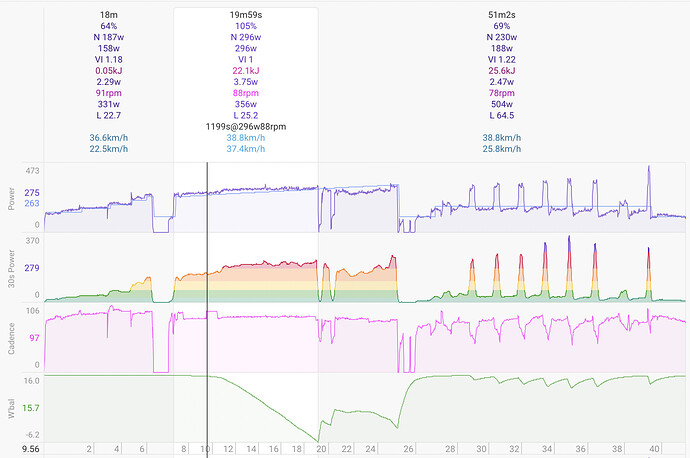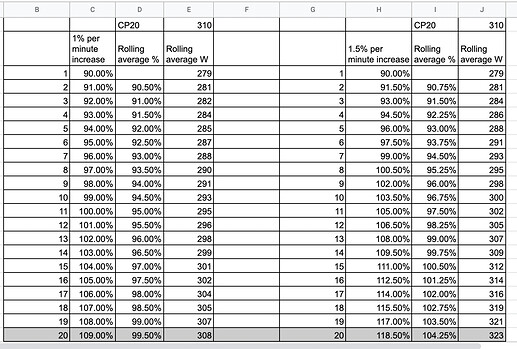This is my first post, so please be gentle. I am agnostic in training philosophy, so I try to learn from as many sources as possible. That said, I find Fast Talk to be a great resource, so I decided to share a 20-min TT protocol that I use.
I have always used CP20 as a reference in my training, and since I have been using Intervals.icu, data derived from 20-minute efforts can easily be used to (at least) ballpark my FTP.
CP20 Step Test/TT Effort
Over the years I have noted that starting too hard in one of these efforts is a great way to turn it into a death march. I, therefore, designed what amounts to what I call a CP20 step test/TT effort to control the first minutes.
The Protocol
It starts at 90% of CP20 (probably 93-97% of FTP in my case), and increases by 1% per minute until what feels like a plateau is reached (hopefully your new CP20 or maybe slightly above for the last few minutes). At that point, simply ride out the duration of the 20 minutes, or keep going if you can. Intervals.icu will be able to pick out the best 20-minute effort from however long your effort is (ex. maybe you’ll last 23 minutes and the best 20 is from 03-23min). Obviously, this is not a real step or ramp test, just a strategy for controlling yourself for the first few minutes.
The picture above shows that I took a break at 20 minutes, and then attempted (unsuccessfully) to rejoin the ramp after a short break. It’s a good mental toughness exercise if you are up to it.
Note that if one starts at 90% + 1% per minute for 20 minutes, the rolling average will equal 100% by 20 minutes, therefore you might not actually detect any improvement. You can do one of two things: follow the prescription for the first 5 minutes or so and then go as hard as you like and try and last longer than 20 minutes, or use 90%+1.5% per minute as a ramp rate. The idea is that you are kept from going out too hard for the first few minutes. As long as you keep your powder dry for the first few minutes, and you are motivated, either method should help you get a great workout and possibly a new 20-minute power for your curve.
I should note that I am not a fan of ERG mode and since I often do 20-min tests outside, I feel that ‘‘course-mode’’ or whatever it is called offers the best real-world application. In my case, I do my workouts on a set of Inside Ride rollers with a QUBO resistance unit that can control grade (to a degree). Since I am in Quebec, I have a lot of experience with indoor riding which predates Zwift and most other platforms by a decade.
Anyway, if this helps anyone, great. I’m open to comments. If anyone wants the MRC or ERG(!) file, I’ll try to figure out how to upload it here.

